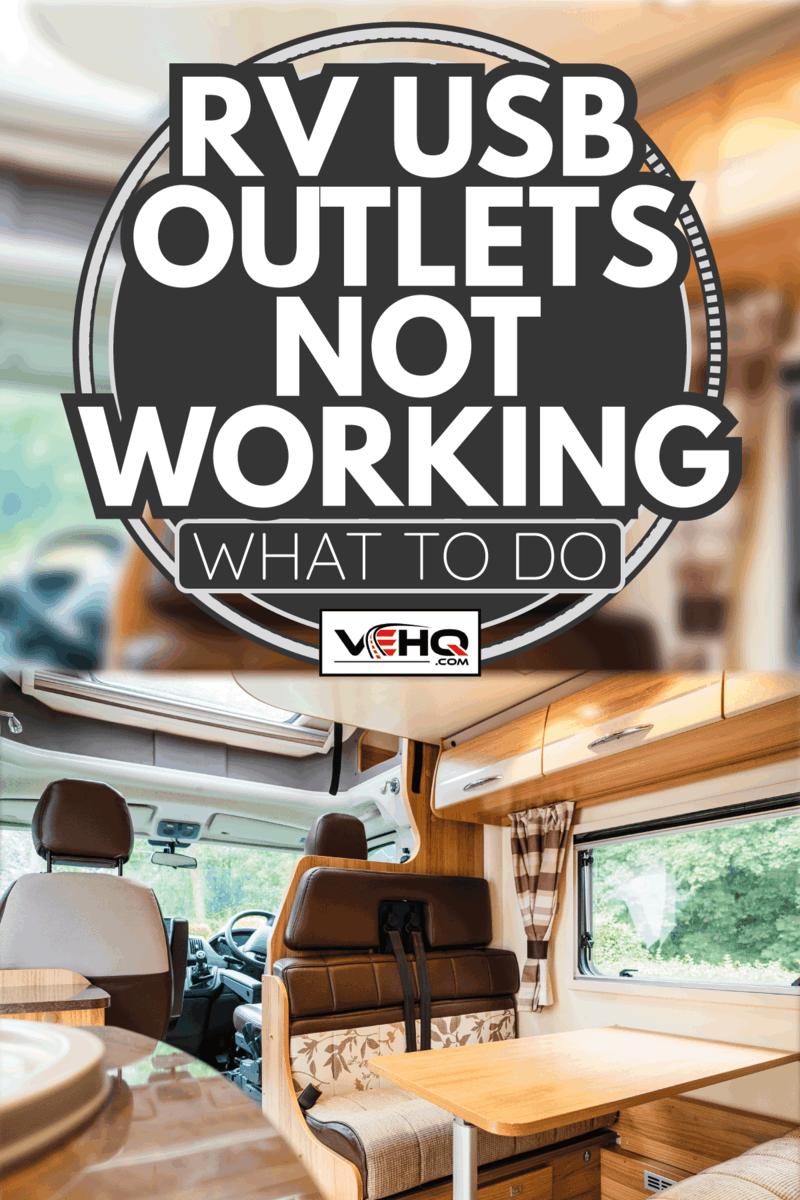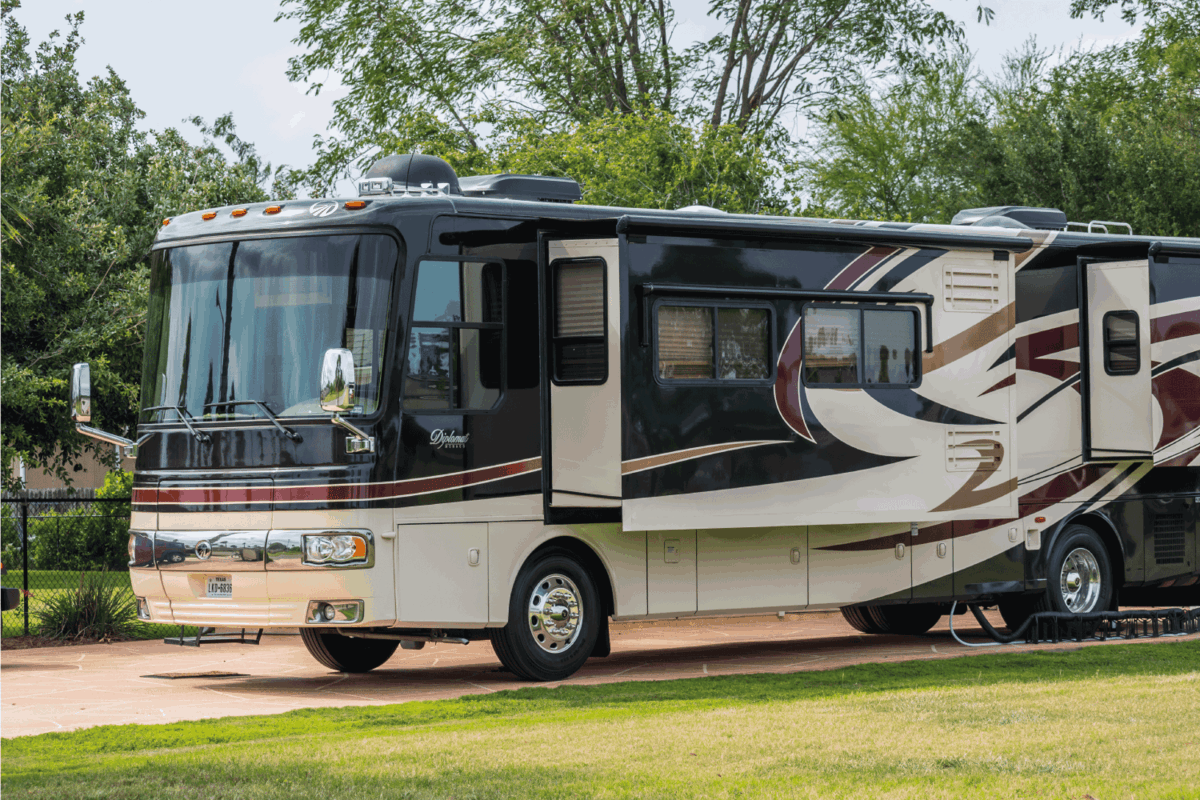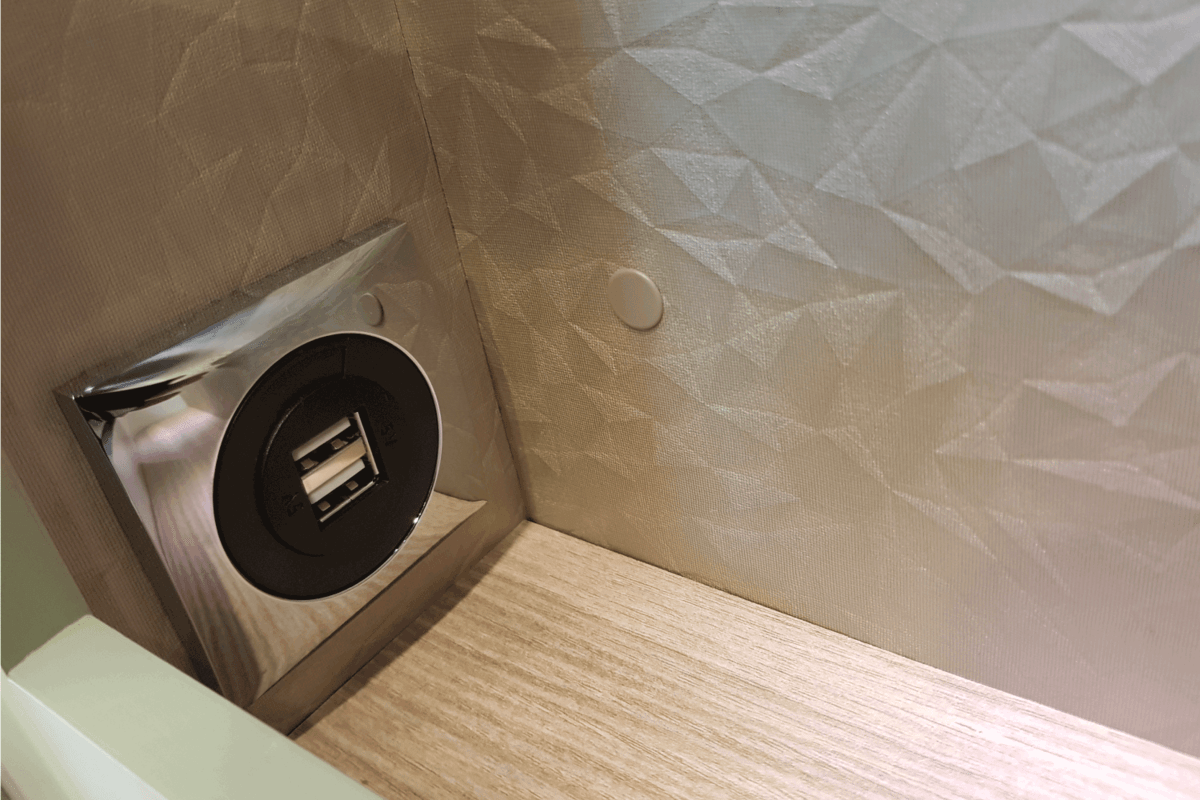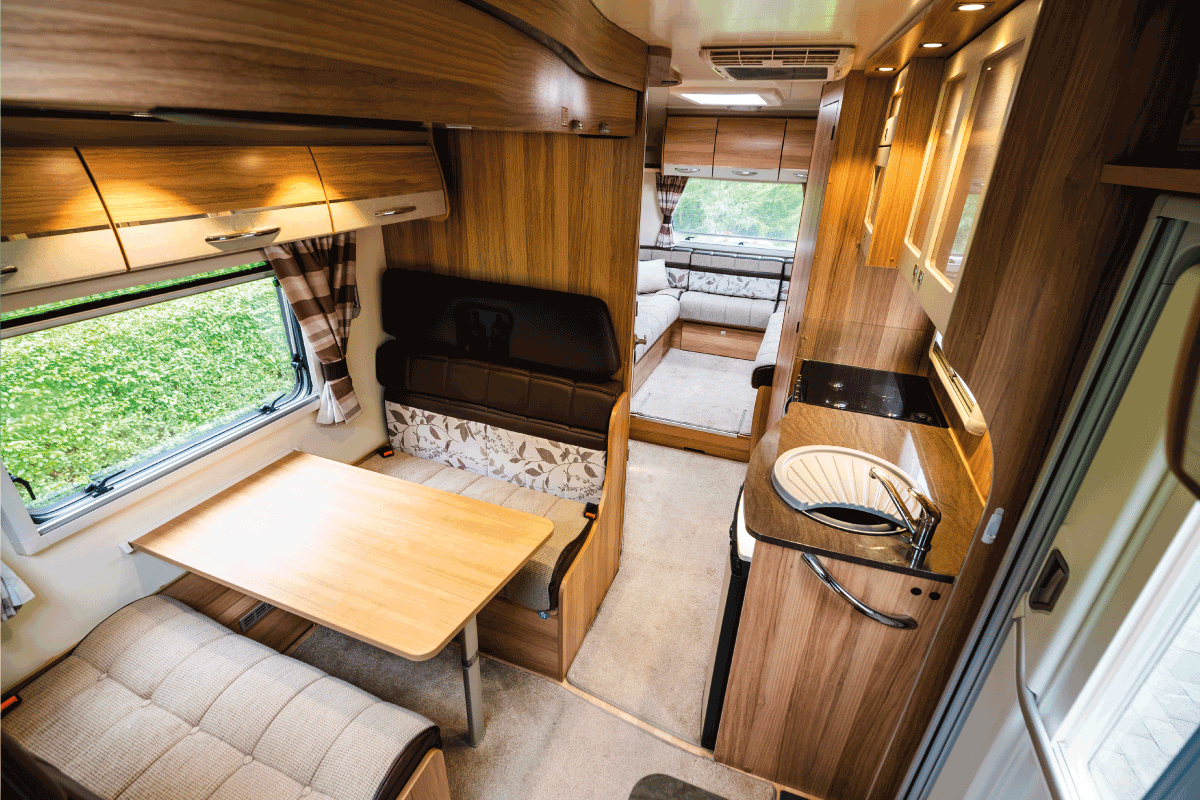Your RV is a conglomeration of thousands of unique moving parts. When one part falls out of place, it can disrupt not only the way your RV runs but your enjoyment on road trips. Your outlets, in particular, are an essential part of your RV. If you find yourself on the road and without power or charge, then you may find yourself wondering: why aren't your USB outlets working? We researched the main reasons this can happen, as well as how to correct these issues.
If your USB outlets stop working in the middle of a trip, there's a chance that your electrical circuits may have suffered damage or given out. You can:
- Reset your breaker
- Repair the damage
- Replace your damaged outlet
- Invest in new wiring
Your USB outlets are essential to both your comfort and safety while you're on the road. The sooner you're able to charge your phone or other appliances, the sooner you can stop worrying and get your mind back on the trip at hand.

RV USB Outlets Not Working - What To Do
If you find yourself contending with a damaged or malfunctioning RV USB outlet, you have three options on your hands. First and foremost, take a look at your breaker to see whether or not you've tripped the fuses. If your outlet appears to be damaged - meaning that your fuses aren't to blame - you can either invest in repairs or outlet replacement.

Repairs
Sometimes, dirt and other debris can make your RV USB outlet more difficult to use. In these cases, so long as the damage isn't severe, you can repair your outlet by taking the following steps:
- Disconnect your RV from all sources of electricity.
- Use a screwdriver to remove your damaged outlet from the wall, cap and all.
- Ensure that the wires connecting to your outlet haven't been hindered in any way.
- With a soft rag, wipe down the outlet, watching for signs of additional damage along the way.
If it doesn't appear that debris or dirt has made your RV USB outlet less usable, consider working with a professional to assess the damage. Crimped or older wires tend to give out over time, meaning that your outlets may no longer work as efficiently as they once did. You can let an electrician or mechanic replace these wires on your behalf or take on the work yourself.
Replacements

Unfortunately, there may come a time when basic USB outlet repairs won't help you restore an outlet's power. In these cases, it's in your best interest to replace the outlet entirely. Luckily, there are adequate converters and replacements designed to substitute for your existing plugs. You can install these on your own or work with a professional in your area to see the job done.
If you do want to DIY your plug replacement, be sure to have the following tools on hand:
- A screwdriver
- Wire cutters
- Spade connectors
- Electrical tape
Be sure to have your replacement USB plug on hand before removing the damaged unit. To begin the replacement process, you'll want to:
- Separate your RV from all sources of electricity.
- Unscrew your charging port's cover, setting the screws off to one side.
- Cut the wires attaching your port to the rest of your RV.
- Remove the port from its cover, saving the cover for later use.
- Strip the red and black wires so that there's at least half an inch or more of exposed wire coming out of your wall.
- Crimp the stripped wire to attach your spade connectors.
- If your connectors don't cover the entire section of wire, you stripped, use electrical tape to match the difference.
- Fit your replacement connector into the saved cover.
- Attach a retaining ring to the back of your cover.
- Connect your wires to the retaining ring's prongs.
- Fit the wired plug cover back into your wall.
Contending With Damaged Wires
Note that this process will not work if your RV is suffering from wiring damage. To ensure that your RV's wiring is working as it should, you'll want to bring out a multimeter. Connect the red prong to the red wire and the matching black prong to the black wire. If your wires are working effectively, then the multimeter should read back your wiring's voltage.
When you're installing a plug replacement, that voltage should settle between 12 and 15 volts. If your plug is receiving fewer volts than noted here, then do not replace your charging port. Instead, get in touch with either an electrician or a mechanic to determine what kind of wire damage you have on your hands.
How Do USB Outlets Go Bad?
There are a few forces that can result in USB outlet failure. Dirt and grime, for example, can disrupt the circuitry of your USB port, making it difficult or impossible to charge your devices. Age, too, can cause your circuitry to start showing signs of wear and tear. Even the inappropriate use of connectors can result in bends and breaks within a USB port.
Of course, there are also times when a USB outlet stops working for one specific device. In these cases, the problem may not lie with your outlet but rather with your charging cable. Should you experience this localized kind of problem, it's in your best interest to test your outlet on other devices while running system diagnostics on your troublesome piece of hardware.
If you do find that one of your USB outlets has gone bad, it's in your best interest to reach out to either a mechanic or an electrician. These professionals can take a closer look at your RV and let you know what problems may be plaguing your outlet. In turn, they can offer repairs designed not only to restore your RV's power but potentially to upgrade your existing outlets and fuse box.
How Much Voltage Does a USB Deliver?
These days, there are six different types of USB specifications. These include:
All of these USB outlets, however, release 5 volts of power at a time. It's whether or not they're compatible with the device you have on hand, though, that serves as your primary concern.
Older RVs, for example, may come equipped with USB 1.0 outlets. These outlets, however, are rare in more modern iterations of the RV and tend not to see much use.
If you have access to a USB 1 outlet, be aware that it may not be compatible with your modern devices. It may be in your best interest to invest in a separate battery or an adapter in these cases. You can alternatively discuss RV modifications with your local mechanic.
Most modern vehicles come with USB outlets of the 3.2 or 4 variety. In these cases, you'll want to make sure you have appropriate charging cables or converters on hand to put your outlets to use. If you have the wrong cable for your device or outlet, then it may seem as though your outlet can't do its job. In reality, that lack of compatibility will make it impossible for your cable to deliver a charge from the outlet to your device.
Can a USB be 12V?
In your standard car, you're resigned to pre-installed USB chargers that can usually only deliver between .5a and 5 volts. In an RV, however, you have two options that can help you achieve a 12V charge. To begin, you can request that a manufacturer include a 12V USB port in your RV. Alternatively, you can convert your existing USB ports to handle a 12V charge.
All you need to do to convert one of your current USB outlets is to plug an appropriate converter into place. These plugs most often find themselves at home in your RV'S cigarette lighter. However, you can convert any USB outlets in your RV so long as you have the right equipment on hand.
Find more 12V converters like this on Amazon.
What Size Fuse Does a 12V USB Socket Need?
Most 12V USB converts require at least 10 amps. In turn, it's in your best interest to ensure that the fuse connected to your converted socket can deliver those 10 amps, if not 20 in total.
That said, you'll have your choice of three available 12V fuses. These include:
Spade Fuses
Spade fuses are some of the most common fuses to be found in your RV. These fuses cap out at 30 amps, making them perfectly capable of handling a 12V USB outlet converter - though you will want to make sure that you're not overloading your device when putting these fuses to use.
Luckily, the spade fuse that appears in RVs most often tends to put out 15 amps at most, making it ideal for charging small appliances without overwhelming their systems.
ANL Fuses
ANL fuses are the powerhouses of the RV outlet world. These fuses tend to be more expensive, but they can deliver between 35 and 750 amps when installed. Because ANL fuses serve as static additions to your fuse box, they tend to be more reliable than any other type of fuse. However, when one grows too old to support your RV's needs, you will need to replace it entirely.
These fuses, while useful, do tend to be a little more powerful than needed to charge most standard appliances. You'll want to consult an electrician before connecting one of these fuses to a 12V USB outlet.
Resettable Breakers
Resettable breakers are ideal for folks who like to fiddle with their RV's output. As the name suggests, these breakers are easier to maintain than some of the others made available on the market. That said, they do tend to endure more wear and tear than ANL fuses, if not spade fuses.
Resettable breakers can deliver between 25 and 200 amps to your USB outlet converter. If you're in the market for a fuse to attend to your RV's USB outlet, this may not be perfect - you'll want to talk to an electrician or consult your device's manual to avoid accidentally damaging your phone.

Restoring Your RV's USB Outlets
Your RV's USB outlets are some of the best tools you have to charge your many appliances. While you may not use these outlets to keep your stove or other accessories running, they help you continue charging your phone. If you cannot keep your phone at full battery, there's an increased risk to your safety during your road trip.
Luckily, it's easier than you think to restore your RV's USB outlets. If your outlets go out, pull over to the side of the road and consult your owner's manual. You can reset your breaker or discuss potential repairs with a mechanic near you. Together, you can identify any loose wires or age-damaged breakers that may have made your trip more complicated.

